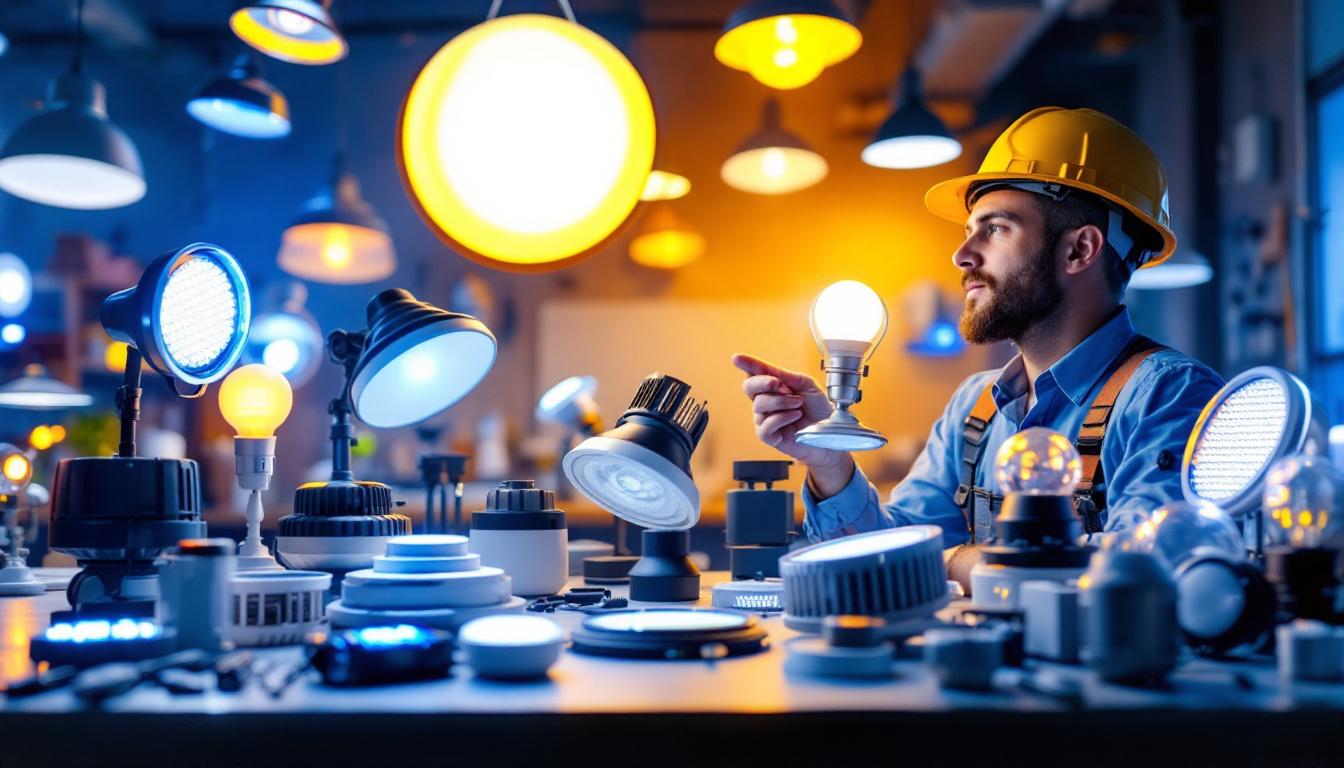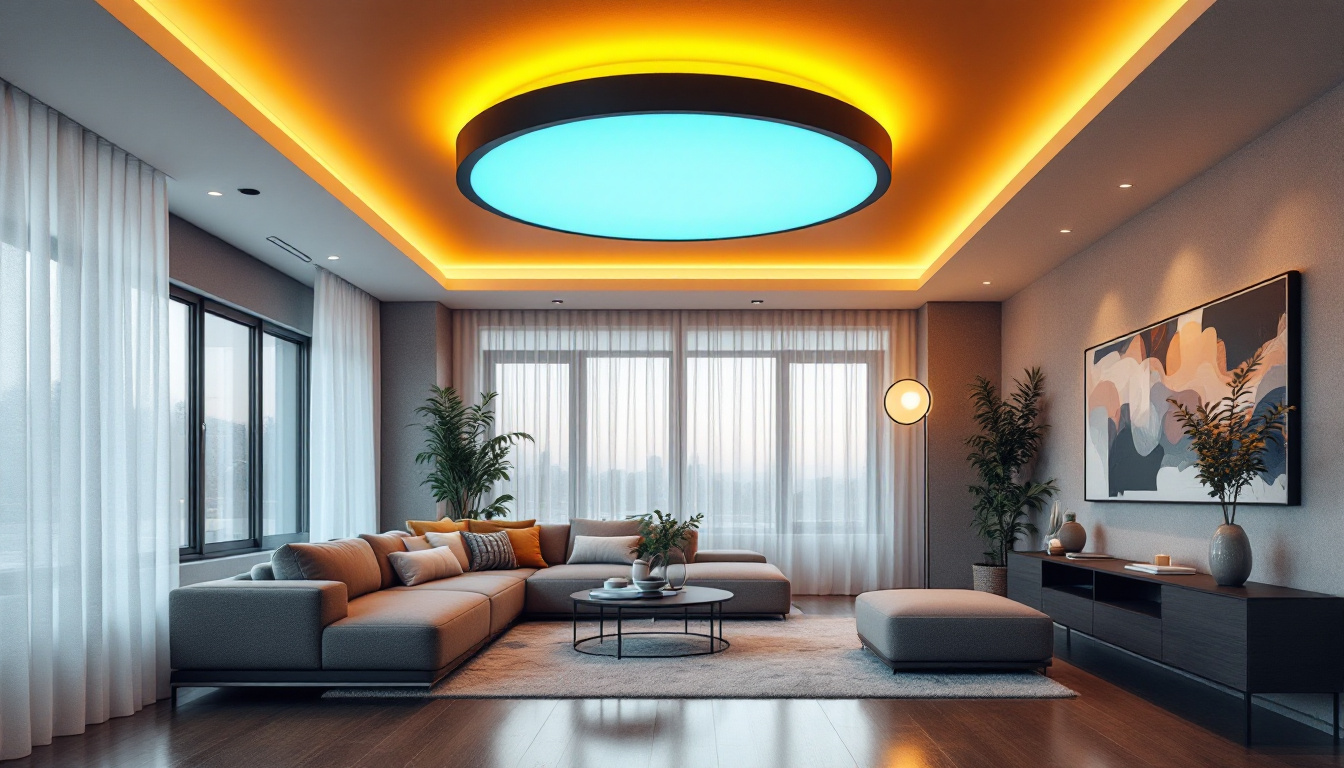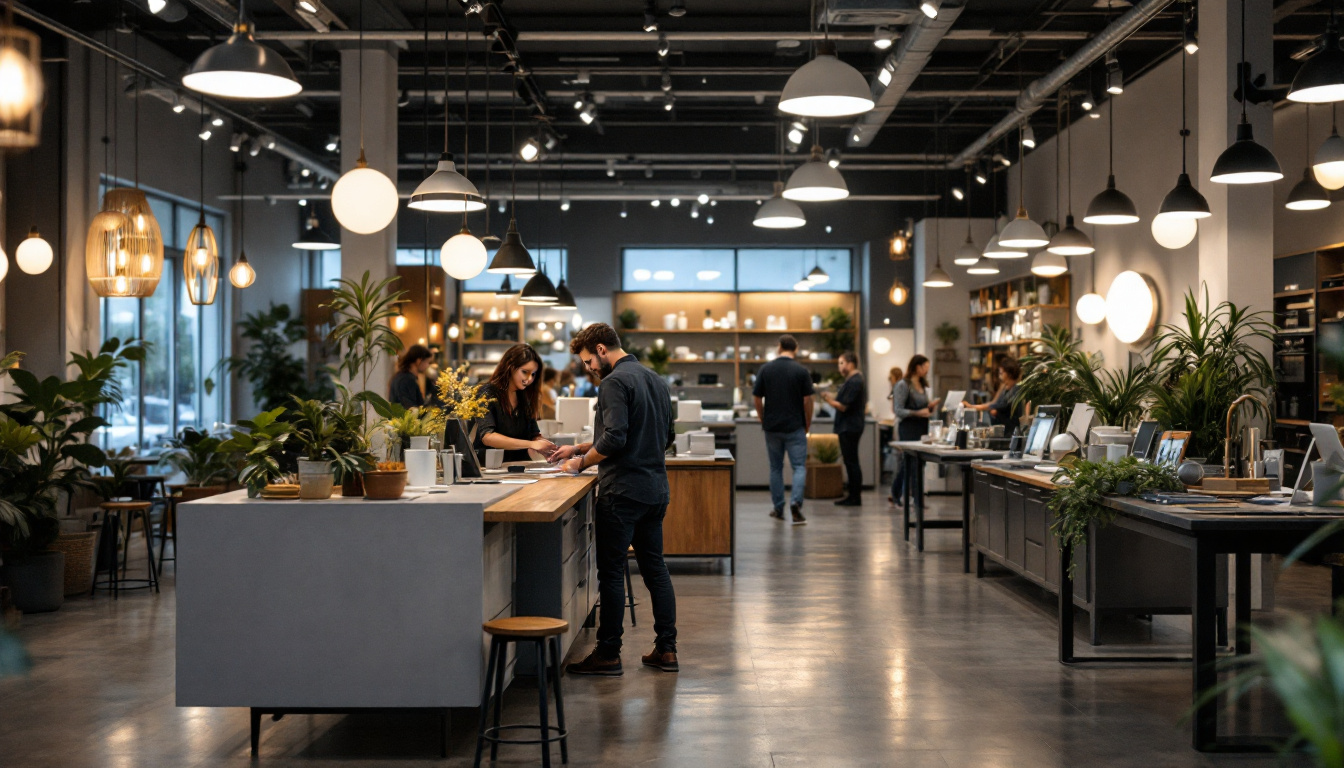
The light bulb has undergone a remarkable transformation since its inception. Understanding this evolution is crucial for lighting contractors who wish to stay informed about industry trends and advancements. From the early incandescent bulbs to modern LED technology, each phase has brought unique challenges and opportunities.
Initially, the incandescent bulb was a groundbreaking invention, providing a reliable source of light for homes and businesses. However, as energy efficiency became a growing concern, the industry began to pivot towards more sustainable options. This shift has led to the development of various lighting technologies, including compact fluorescent lamps (CFLs) and light-emitting diodes (LEDs).
Incandescent bulbs were the first widely used light sources, known for their warm glow and simplicity. Despite their popularity, they are highly inefficient, converting only a small percentage of energy into light. For lighting contractors, this means that while incandescent bulbs may still appeal to certain customers for their aesthetic qualities, they are not the most cost-effective option in the long run.
Contractors should educate clients about the benefits of transitioning to more efficient lighting solutions. Highlighting the potential for energy savings and reduced electricity bills can persuade customers to consider alternatives to incandescent bulbs. Additionally, it’s important to discuss the environmental impact of their choices, as incandescent bulbs contribute significantly to greenhouse gas emissions due to their high energy consumption. By providing information on the carbon footprint associated with different lighting options, contractors can empower clients to make informed decisions that align with their values and sustainability goals.
Compact fluorescent lamps (CFLs) emerged as a more energy-efficient alternative to incandescent bulbs. They use significantly less energy and have a longer lifespan, making them an attractive option for both residential and commercial applications. However, the introduction of LEDs has revolutionized the lighting industry.
LEDs are now the gold standard in lighting technology, offering unparalleled efficiency, longevity, and versatility. They consume a fraction of the energy required by incandescent and CFL bulbs and can last up to 25 times longer. For lighting contractors, this means an opportunity to provide clients with solutions that not only save money but also contribute to a more sustainable future. Furthermore, the advancements in LED technology have led to a variety of options, including smart LED bulbs that can be controlled via smartphone apps, allowing users to customize their lighting experience. This integration of technology into lighting design opens up new avenues for contractors to enhance the functionality and appeal of their installations, catering to the growing demand for smart home solutions. As the market continues to evolve, staying abreast of these innovations will be essential for contractors looking to remain competitive and meet the diverse needs of their clients.
For lighting contractors, having a solid grasp of various lighting technologies is essential. This knowledge not only enhances credibility but also empowers contractors to make informed recommendations to clients. Understanding the differences between lighting types can significantly impact project outcomes. With advancements in technology, the landscape of lighting solutions is continually evolving, making it imperative for contractors to stay informed about the latest innovations and trends in the industry.
Color temperature is a critical factor in lighting design. Measured in Kelvins (K), it describes the appearance of the light emitted by a bulb. Warm white light (around 2700K) creates a cozy atmosphere, making it ideal for residential settings. In contrast, cool white light (around 4000K) is often preferred for commercial spaces due to its bright and energizing effect. The choice of color temperature can influence not just aesthetics but also productivity; for example, studies have shown that cooler temperatures can enhance focus and alertness in work environments.
Contractors should consider the intended use of each space when recommending lighting solutions. Understanding how color temperature affects mood and functionality can help contractors create tailored lighting plans that meet the specific needs of their clients. Additionally, incorporating adjustable color temperature options, such as tunable white lighting, can provide flexibility, allowing users to modify the ambiance according to different activities throughout the day.
Energy efficiency ratings, such as the Energy Star label, are essential for contractors to understand. These ratings indicate how much energy a light fixture consumes compared to its output. Using energy-efficient products not only benefits the environment but also enhances the contractor’s reputation as a responsible and knowledgeable professional. Furthermore, energy-efficient lighting solutions can lead to significant cost savings for clients over time, making them a compelling choice for budget-conscious consumers.
Contractors should stay updated on the latest energy efficiency standards and regulations. This knowledge allows them to guide clients toward compliant products, ensuring that installations meet local codes and contribute to overall energy savings. Keeping abreast of emerging technologies, such as LED advancements and smart lighting systems, can also provide contractors with a competitive edge, enabling them to offer innovative solutions that align with sustainability goals and modern consumer preferences.
Designing effective lighting solutions requires a blend of technical knowledge and creative vision. Lighting contractors must consider various factors, including the purpose of the space, architectural features, and the preferences of the client. A well-designed lighting plan can enhance aesthetics while providing functional illumination. The integration of energy-efficient technologies, such as LED fixtures, can also contribute to sustainability goals, making it essential for contractors to stay informed about the latest advancements in lighting technology.
Every client has unique needs and preferences. Conducting a thorough assessment is crucial for understanding these requirements. This process may involve discussing the intended use of the space, preferred lighting styles, and any specific challenges the client may face. Additionally, it is beneficial to consider the emotional impact of lighting; for instance, warm lighting can create a cozy atmosphere, while cooler tones may promote focus and productivity.
By engaging in open communication, contractors can build trust and ensure that their recommendations align with the client’s vision. This collaborative approach not only leads to better outcomes but also fosters long-term relationships with clients. Utilizing tools such as mood boards or 3D visualizations can further enhance this dialogue, allowing clients to visualize how different lighting options will transform their spaces before any installation takes place.
Layered lighting is a design technique that combines different types of lighting to achieve a balanced and functional atmosphere. This approach typically includes ambient, task, and accent lighting. Ambient lighting provides general illumination, task lighting focuses on specific activities, and accent lighting highlights architectural features or artwork. The strategic placement of these layers can dramatically alter the perception of space, making it feel larger or more intimate depending on the desired effect.
Contractors should educate clients about the benefits of layered lighting. By demonstrating how different layers can enhance the overall aesthetic and functionality of a space, contractors can help clients make informed decisions that elevate their environments. Furthermore, incorporating smart lighting controls allows clients to adjust the intensity and color temperature of their lighting throughout the day, adapting to various activities and moods. This flexibility not only enhances user experience but also contributes to energy savings, making it a win-win for both the client and the environment.
The lighting industry is constantly evolving, with new technologies and design trends emerging regularly. For lighting contractors, staying ahead of these trends is essential for maintaining a competitive edge. This involves continuous education and adaptation to changing market demands.
Smart lighting technology has gained significant traction in recent years. These systems allow users to control their lighting remotely, adjust brightness levels, and even change color temperatures using smartphones or voice commands. Incorporating smart lighting solutions into project proposals can set contractors apart from competitors.
Contractors should familiarize themselves with various smart lighting products and their compatibility with existing systems. Offering clients the option to integrate smart technology can enhance their overall experience and provide added convenience.
As sustainability becomes a priority for many consumers, lighting contractors must adopt eco-friendly practices. This includes using energy-efficient products, minimizing waste during installations, and considering the environmental impact of lighting choices.
Contractors can also educate clients about the benefits of sustainable lighting solutions, such as reduced energy costs and a smaller carbon footprint. By positioning themselves as advocates for sustainability, contractors can attract environmentally-conscious clients and contribute to a greener future.
Establishing and maintaining strong client relationships is vital for the success of any lighting contractor. A satisfied client is more likely to refer others and return for future projects. Building trust and rapport can significantly impact a contractor’s reputation and business growth.
Effective communication is the foundation of any successful client relationship. Contractors should practice active listening, ensuring they fully understand client needs and preferences. Regular updates throughout the project can also help clients feel involved and informed.
Using clear and concise language when discussing technical aspects of lighting can prevent misunderstandings. Providing visual aids, such as diagrams or samples, can further enhance communication and help clients visualize the proposed solutions.
Exceptional customer service goes beyond completing a project on time. It involves being responsive to client inquiries, addressing concerns promptly, and ensuring satisfaction with the final results. Contractors who prioritize customer service are more likely to receive positive reviews and referrals.
Following up with clients after project completion can also demonstrate commitment to their satisfaction. This practice not only reinforces the contractor’s dedication but also opens the door for future business opportunities.
The lighting industry is dynamic and ever-evolving, presenting both challenges and opportunities for lighting contractors. By understanding the history of the light bulb, staying informed about technological advancements, and prioritizing client relationships, contractors can position themselves for success in this competitive field.
Embracing energy-efficient solutions, smart technology, and sustainable practices will not only benefit clients but also contribute to a brighter future for the industry as a whole. With a commitment to excellence and a focus on continuous improvement, lighting contractors can illuminate their path to success.
Ready to take your lighting projects to the next level? At LumenWholesale, we provide lighting contractors with the superior, spec-grade lighting products you need at prices that can’t be beaten. Say goodbye to local distributor markups and hello to our extensive selection that meets the highest industry standards. With free shipping on bulk orders, you can trust that you’re getting premium lighting at the best value — all with the convenience you deserve. Don’t miss out on the perfect combination of quality, affordability, and hassle-free service. Wholesale Lighting at the Best Value is just a click away. Elevate your lighting solutions with LumenWholesale today.

Discover essential insights into under shelf lighting with our comprehensive guide tailored for lighting contractors.

Explore the diverse world of LED lights and discover essential insights tailored for lighting contractors.

Discover why wafer can lights are revolutionizing lighting projects with their sleek design, energy efficiency, and easy installation.

Discover the pivotal role commercial lighting distributors play in successful lighting installations.